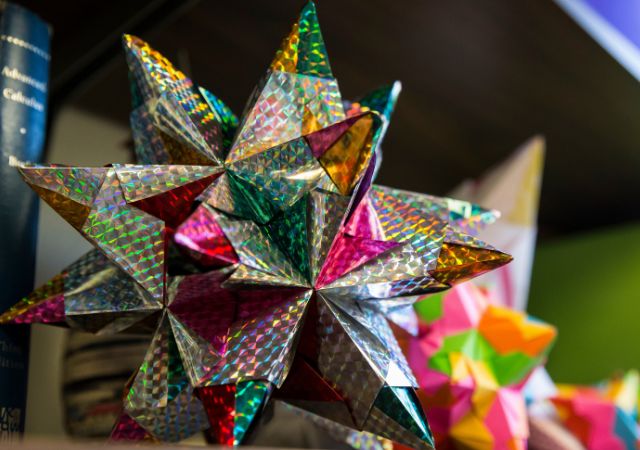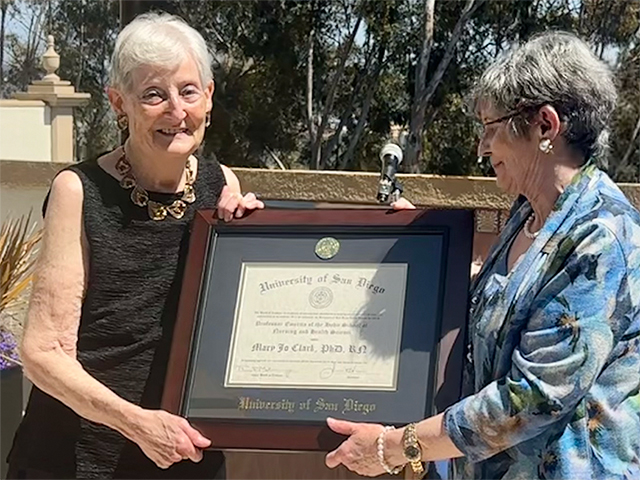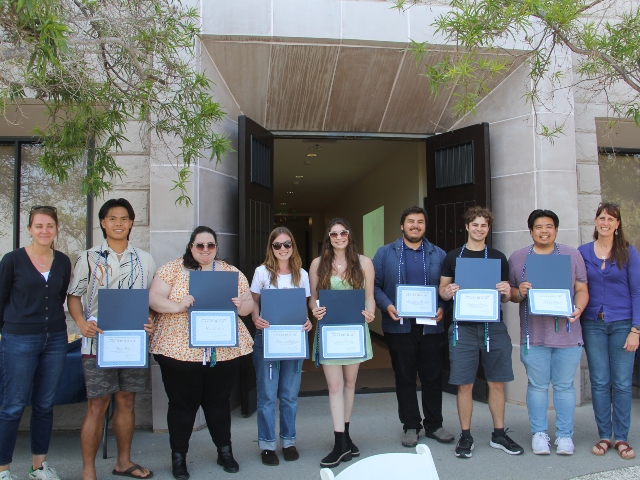Dia de los Muertos Event Celebrates Kumeyaay Nation's Jamul Indian Village
A powerful week of cultural education, history, giving respect to lives lost and honoring those who are living without a treasured loved one is coming to a close. The Humanities Center at the University of San Diego — in conjunction with the tireless work of USD Communication Studies Associate Professor Antonieta Mercado, PhD — has offered insightful and inspiring programming in recognition of Dia De Los Muertos (Day of the Dead).
On Wednesday afternoon, an event titled, “Honoring Ancestors: Conceptions of Death Among Native Americans in San Diego,” was introduced by Tribal Liaison and Professor of Practice Persephone Lewis. She welcomed guests from the Jamul Indian Village of California —one of 13 bands of the Kumeyaay Nation that are federally recognized as a Sovereign Nation — to share their story, history and reflect on All Souls Day, which is Nov. 2. Speakers included Jamul Indian Village Tribal Government leaders Chairwoman Erica Pinto and her father, Councilman Jesse Pinto Sr. Also in attendance was Tribal Council Secretary Carlene Chamberlain.
The University of San Diego, whose campus grounds reside on Kumeyaay Nation land, has been working alongside Lewis for quite some time to broaden awareness and strengthen and honor its relationships with native tribes.
On Wednesday, the Humanities Center hosted its Dia de los Muertos event in its space within Saints Tekakwitha and Serra Hall. Pinto Sr. shared stories about the history of the Jamul Indian Village, including the Saint Francis of Xavier Church and an adjoining cemetery that serves as the final resting place for numerous relatives and members of this proud community.
The cemetery and church land were once owned by the Catholic Diocese of San Diego. On All Souls’ Day, Indian reservations throughout San Diego take pride and care remembering their loved ones and community members by decorating gravesites with flowers, candies and candles. These items, along with the ritual of placing them at gravesites is to “make them look pretty — you are dressing them up,” Pinto Sr. explained. A meal is also prepared and those who have departed, while not physically present at the dining table, are remembered while “joining family members at the table in spirit.”
He touched deeper on the cemetery and care given to the space over the years, noting that oral history shows that one of San Diego’s richest men, John D. Spreckels had employed Jamul Indians at his ranch and reportedly donated a small piece of land, which became the cemetery. In later years, the land was owned by the Catholic Diocese of San Diego, which led to conflict, according to Pinto Sr., because the church did not contribute to its upkeep. He noted that members of the Jamul tribe did their best to maintain the church and the cemetery in order to respect and honor those who had passed away.
Recently, Pinto said, the relationship improved. He and daughter Erica credited Lewis’ involvement and others who worked to overcome those differences. A few years ago, San Diego Bishop Robert McElroy and the Jamul Indian Village came together and a decision was made to give land ownership back to the reservation. Near the end of Wednesday’s program, Erica thanked Lewis for her peacebuilding efforts with an special gift, a beautiful necklace. The hugs between Lewis and her Jamul guests were genuine and heartfelt.
The final presentation slide said it all: “In conclusion, this small piece of land that holds many, many memories and the resting place of our loved ones, is now ours. This would not have been possible had Perse Lewis not entered our lives. This evening we want to show our love, how grateful we are and show our appreciation to her for the love she has shown our people, our beloved ancestors.”
— Ryan T. Blystone
Contact:
USD News Center
news@sandiego.edu
(619) 260-4681




